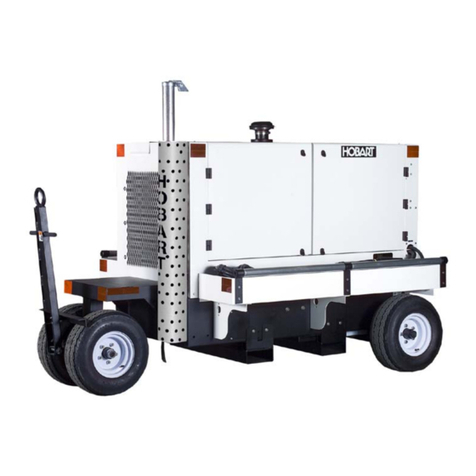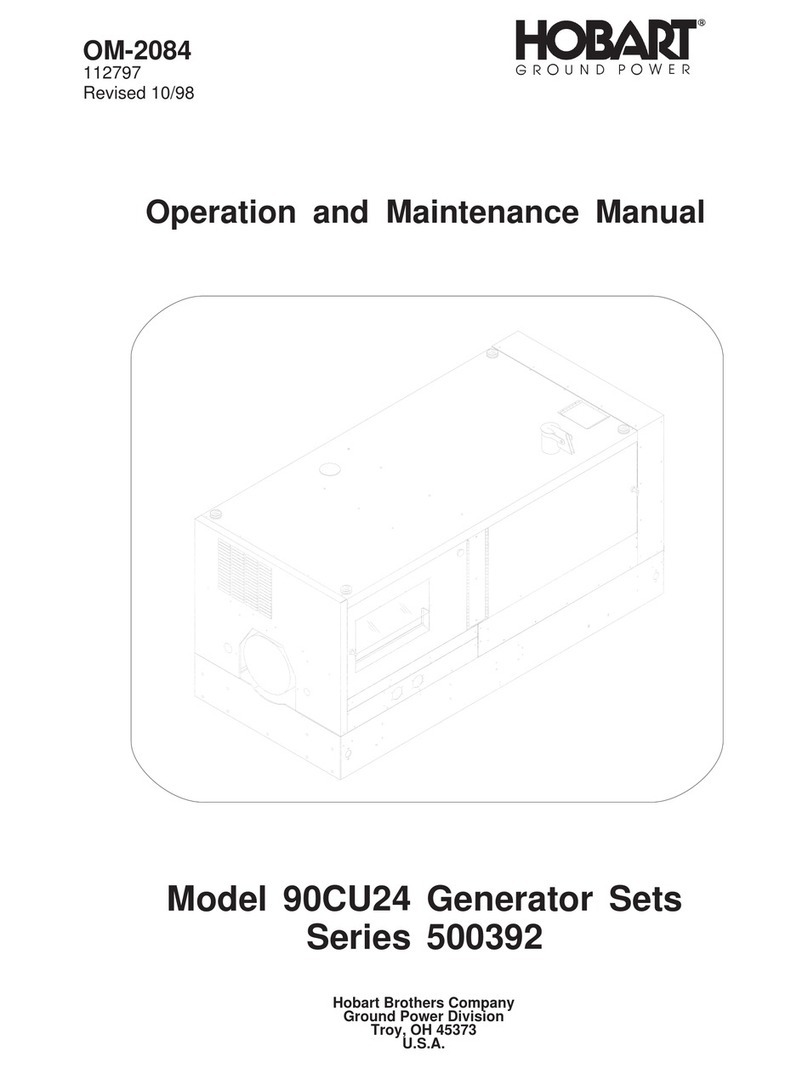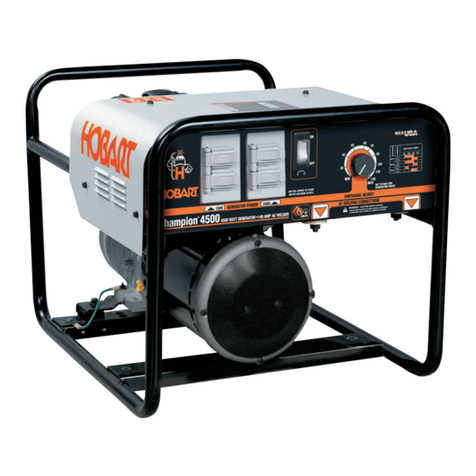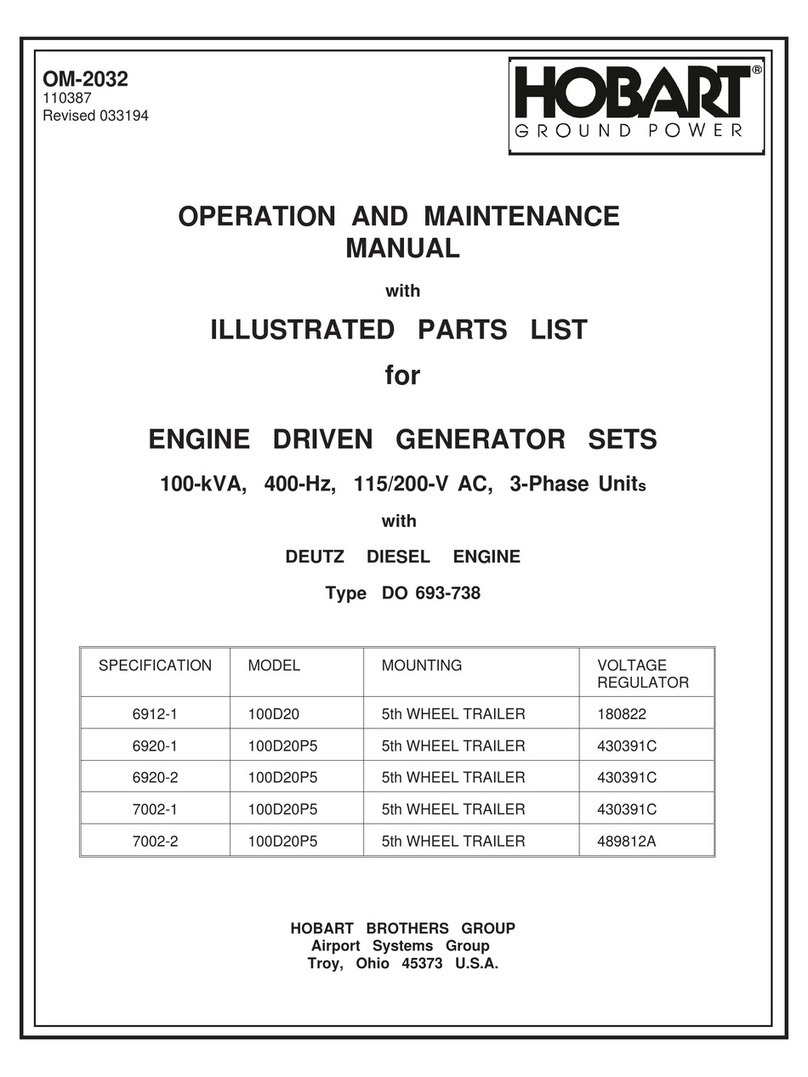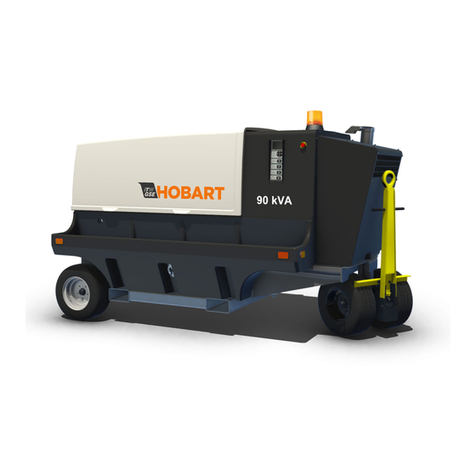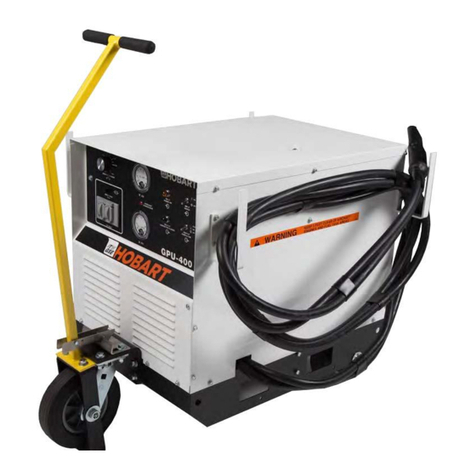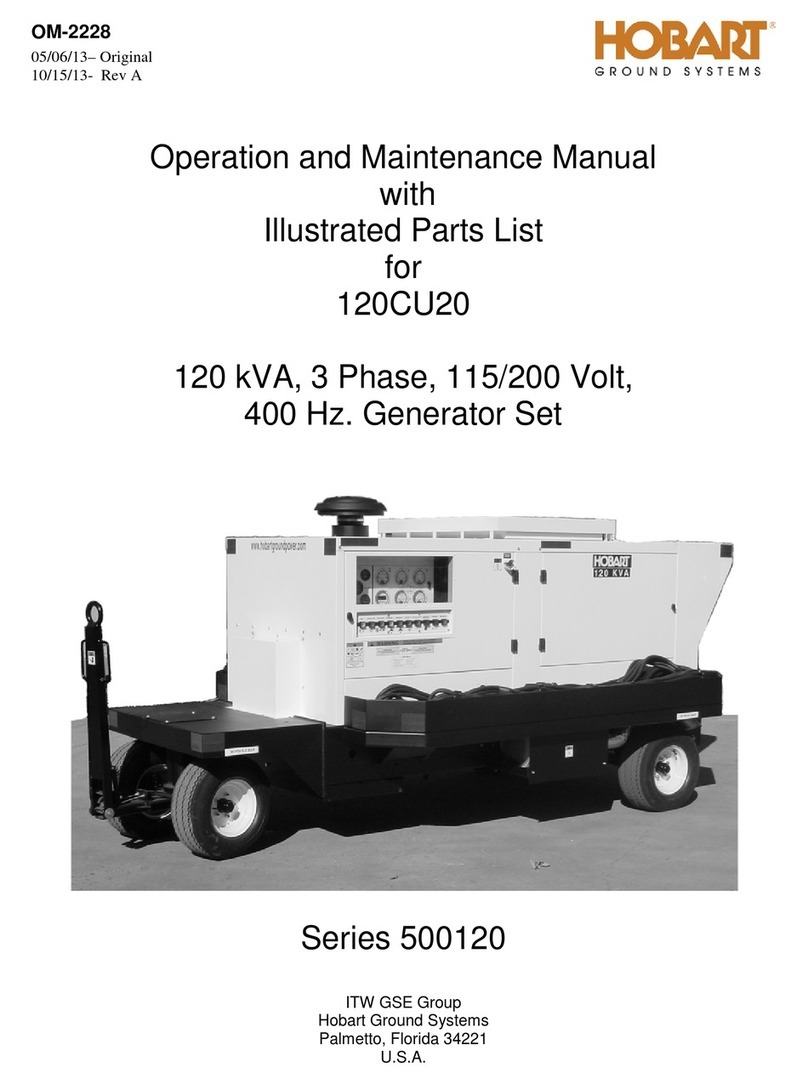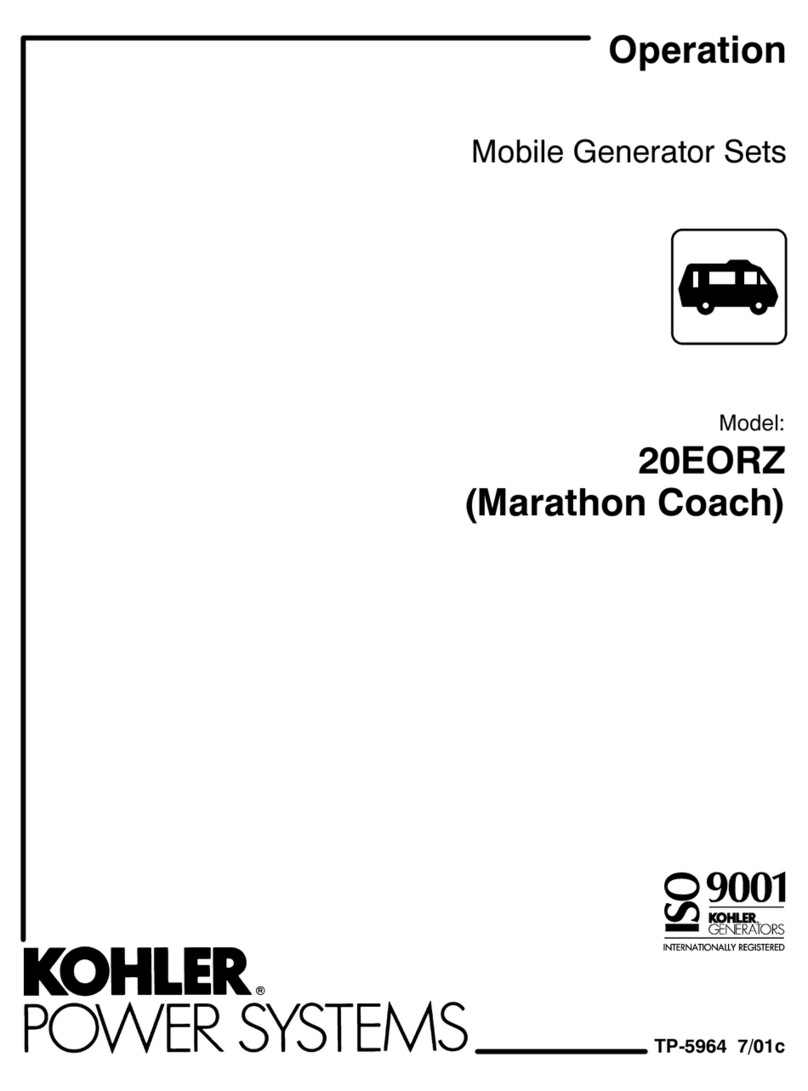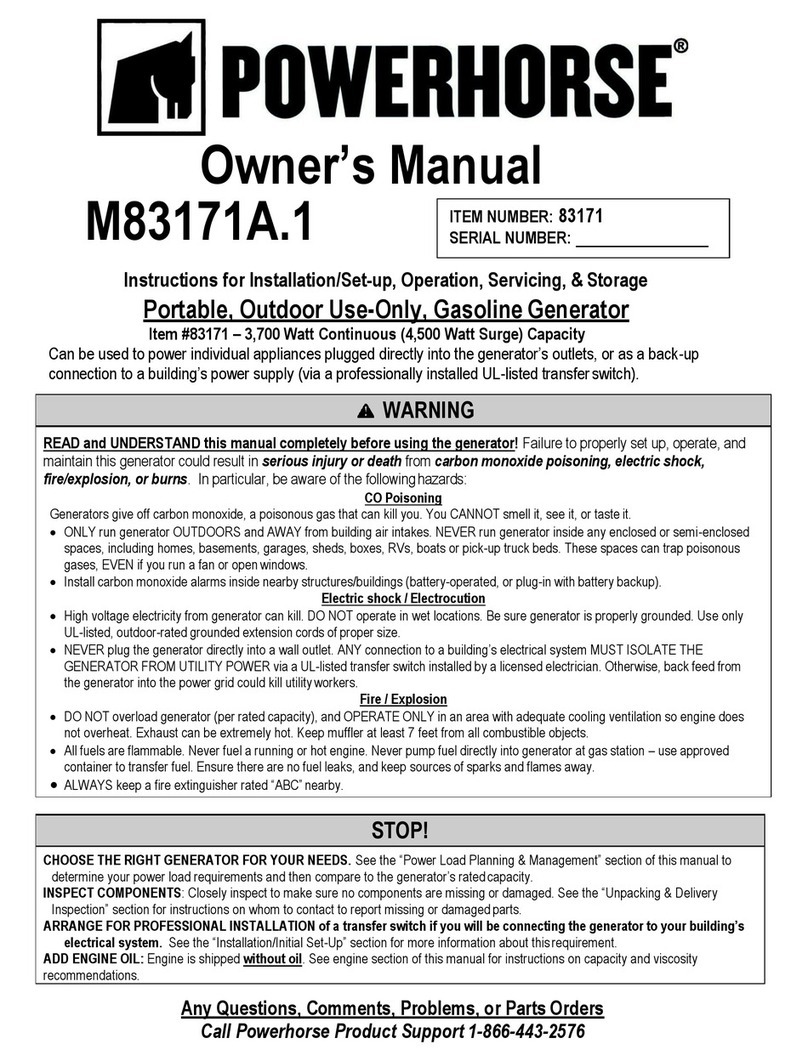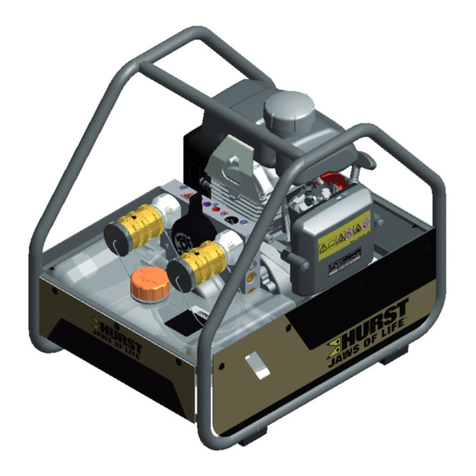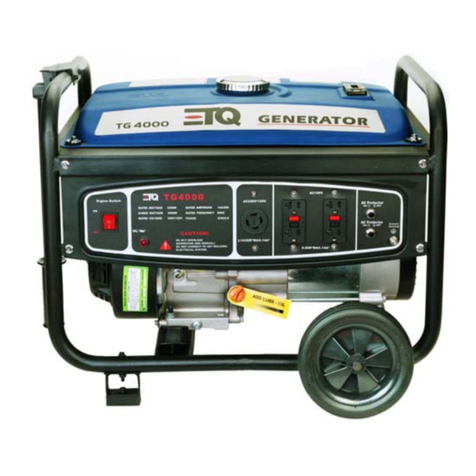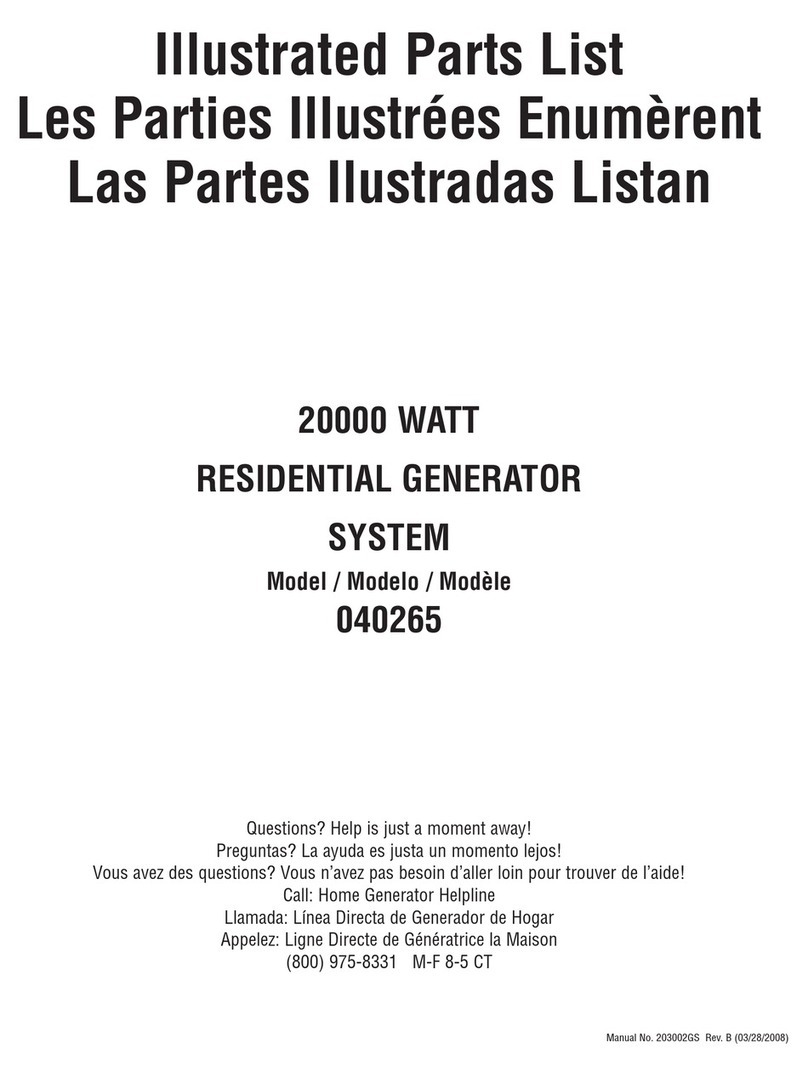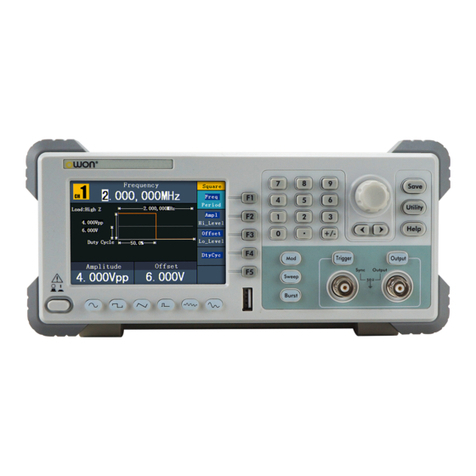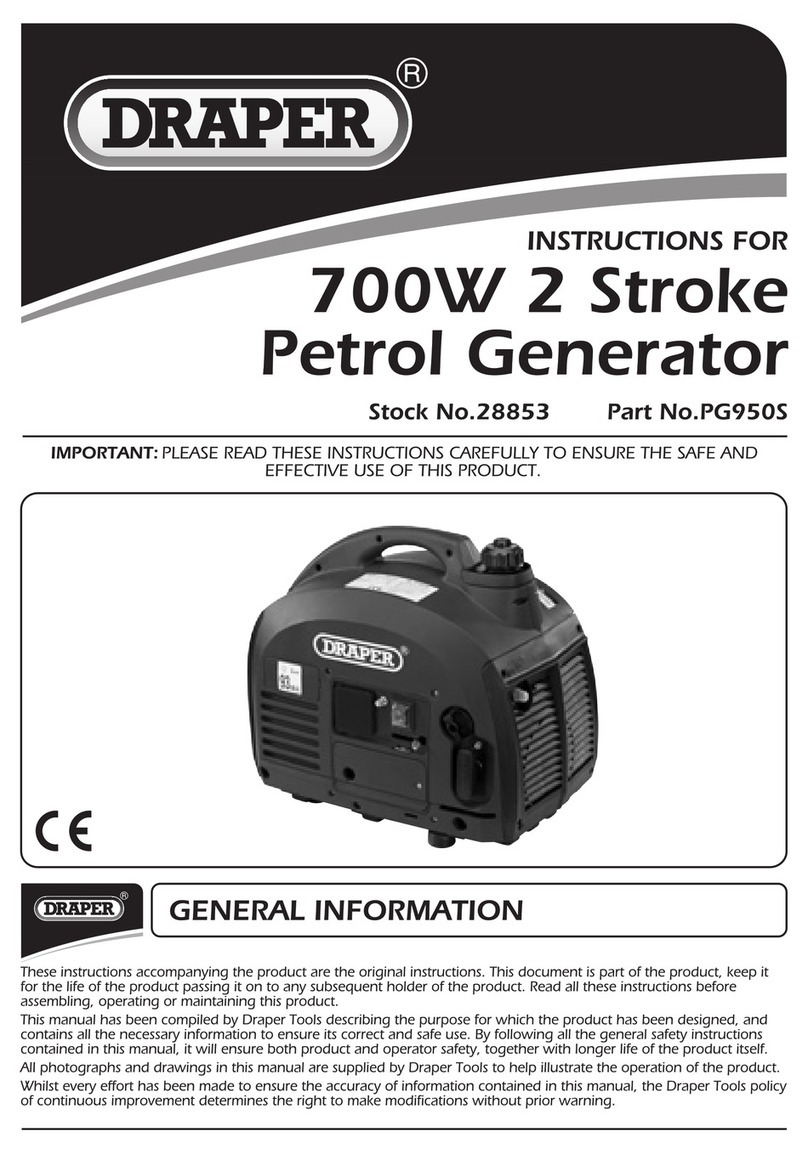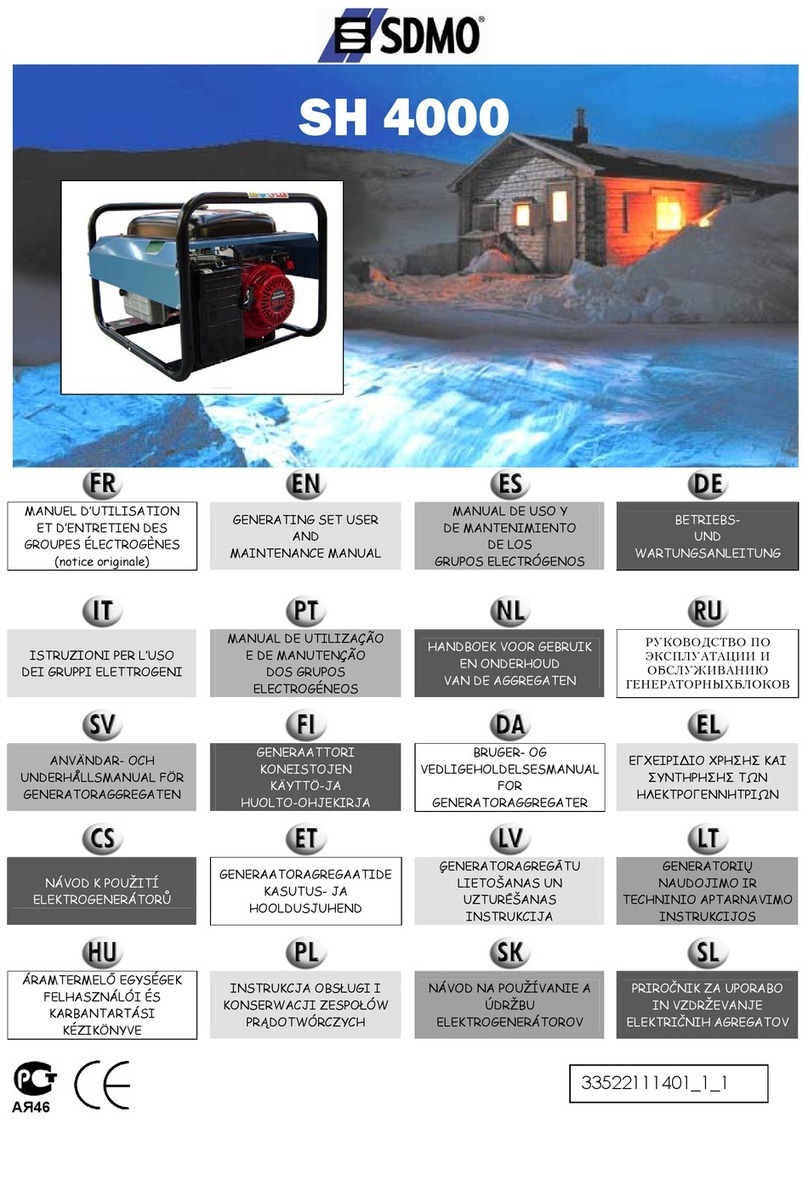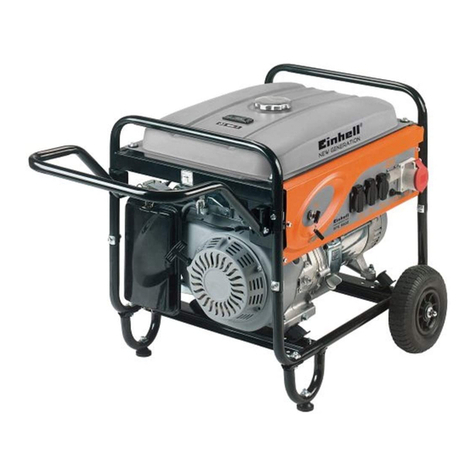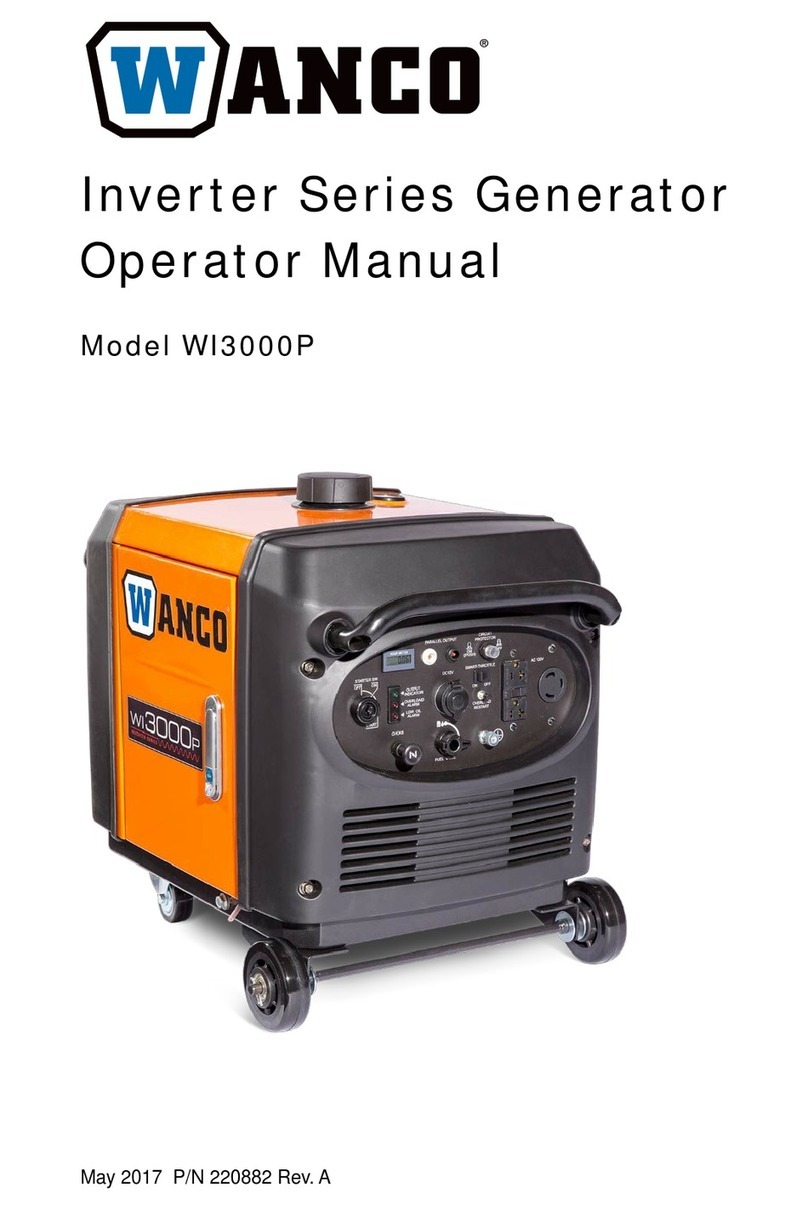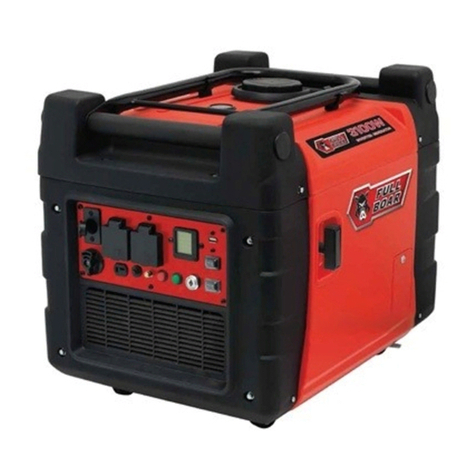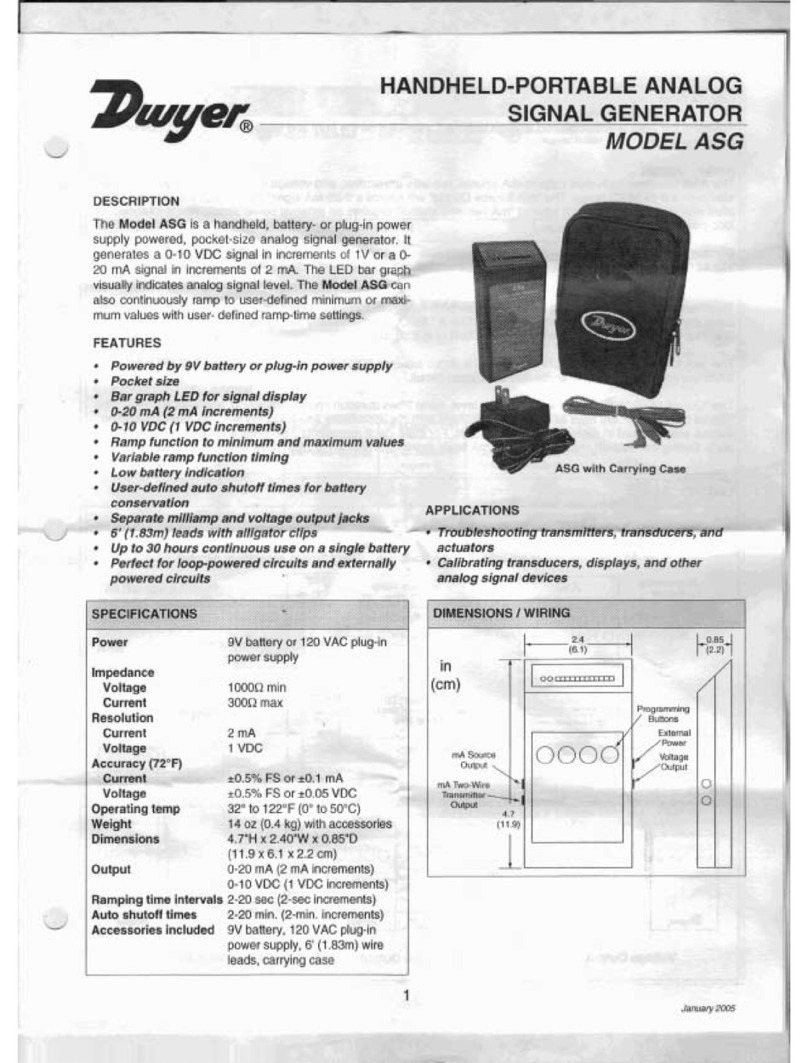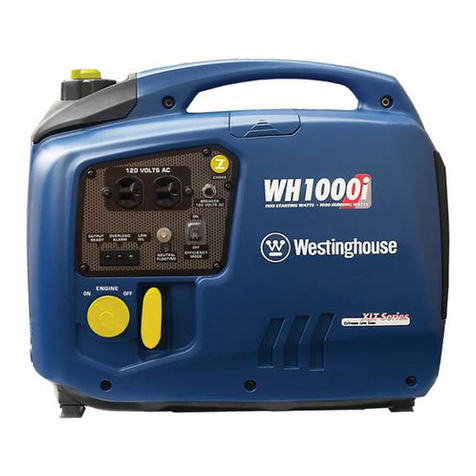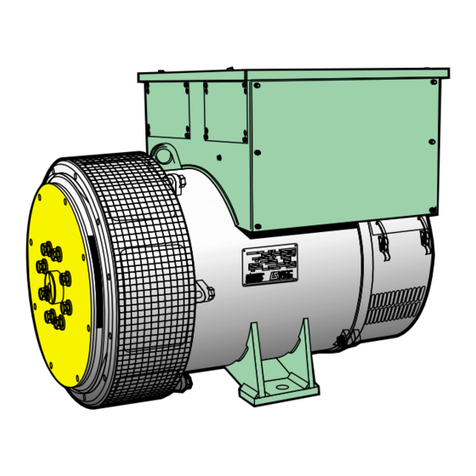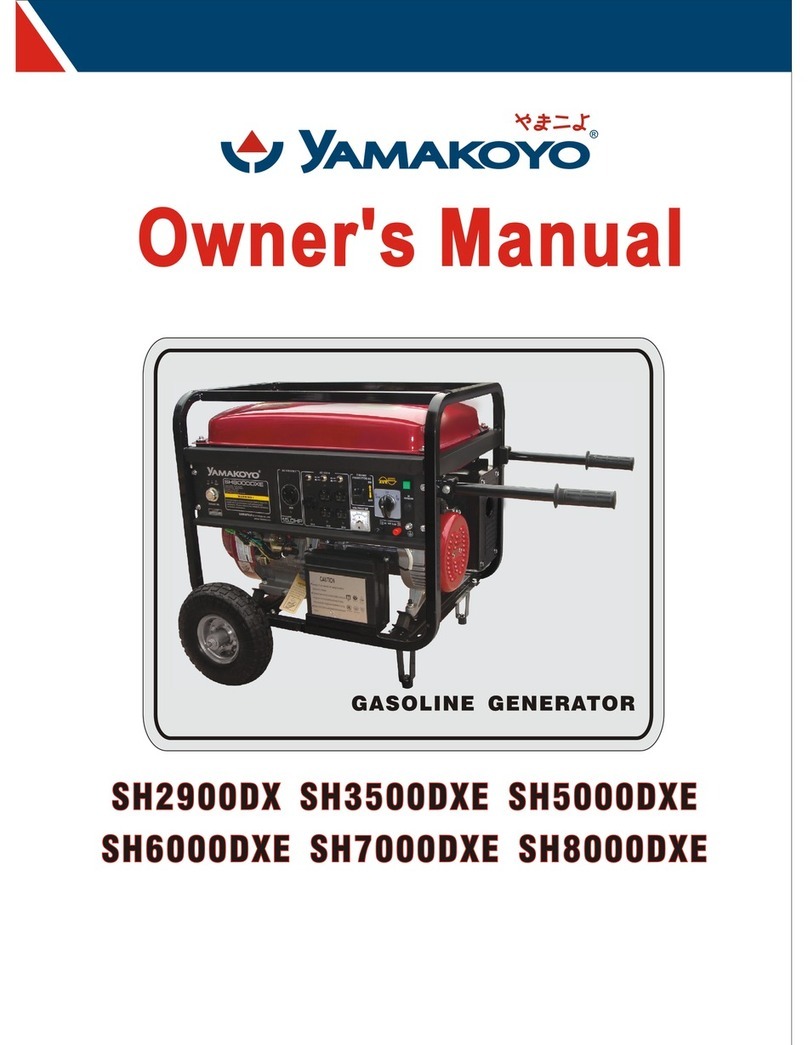
a. Installation and Grounding of Electrically Powered Equipment
Equipment driven by electric motors
(rather than by diesel or gasoline engines)
must be installed
and maintained in accordance with the National Electrical Code, ANSI/NFPA 70, or other applicable
codes. A power disconnect switch or circuit breaker must be located at the equipment. Check the
nameplate for voltage, frequency, and phase requirements. If only 3-phase power is available,
connect any single-phase rated equipment to only two wires of the 3-phase line. DO NOT
CONNECT the equipment grounding conductor (lead) to the third live wire of the 3-phase line, as this
makes the equipment frame electrically HOT, which can cause a fatal shock.
Always connect the grounding lead, if supplied in a power line cable, to the grounded switch box or
building ground. If not provided, use a separate grounding lead. Ensure that the current
(amperage)
capacity of the grounding lead will be adequate for the worst fault current situation. Refer to the
National Electrical Code ANSI/NFPA 70 for details. Do not remove plug ground prongs. Use correctly
mating receptacles.
b. Output Cables and Terminals
Inspect cables frequently for damage to the insulation and the connectors. Replace or repair cracked
or worn cables immediately. Do not overload cables. Do not touch output terminal while equipment is
energized.
3. Service and Maintenance
This equipment must be maintained in good electrical and mechanical condition to avoid hazards
stemming from disrepair. Report any equipment defect or safety hazard to the supervisor and
discontinue use of the equipment until its safety has been assured. Repairs should be made by qualified
personnel only.
Before inspecting or servicing electrically-powered equipment, take the following precautions:
a. Shut OFF all power at the disconnecting switch or line breaker before inspecting or servicing
the equipment.
b. Lock switch OPEN
(or remove line fuses)
so that power cannot be turned on accidentally.
c. Disconnect power to equipment if it is out of service.
d. If troubleshooting must be done with the unit energized, have another person present who is
trained in turning off the equipment and providing or calling for first aid.
4. Fire And Explosion Prevention
Fire and explosion are caused by electrical short circuits, combustible material near engine exhaust
piping, misuse of batteries and fuel, or unsafe operating or fueling conditions.
a. Electrical Short Circuits and Overloads
Overloaded or shorted equipment can become hot enough to cause fires by self destruction or by
causing nearby combustibles to ignite. For electrically-powered equipment, provide primary input
protection to remove short circuited or heavily overloaded equipment from the line.
b. Batteries
Batteries may explode and/or give off flammable hydrogen gas. Acid and arcing from a ruptured
battery can cause fires and additional failures. When servicing, do not smoke, cause sparking, or use
open flame near the battery.
c. Engine Fuel
Use only approved fuel container or fueling system. Fires and explosions can occur if the fuel tank is
not grounded prior to or during fuel transfer. Shut unit DOWN before removing fuel tank cap. DO
NOT completely fill tank, because heat from the equipment may cause fuel expansion overflow.
Remove all spilled fuel IMMEDIATELY, including any that penetrates the unit. After clean-up, open
equipment doors and blow fumes away with compressed air.
OM-2040 / Operation and Maintenance Manual
90D20 / Generator Sets
Safety Warnings Revised
Page 2 August 01/95
